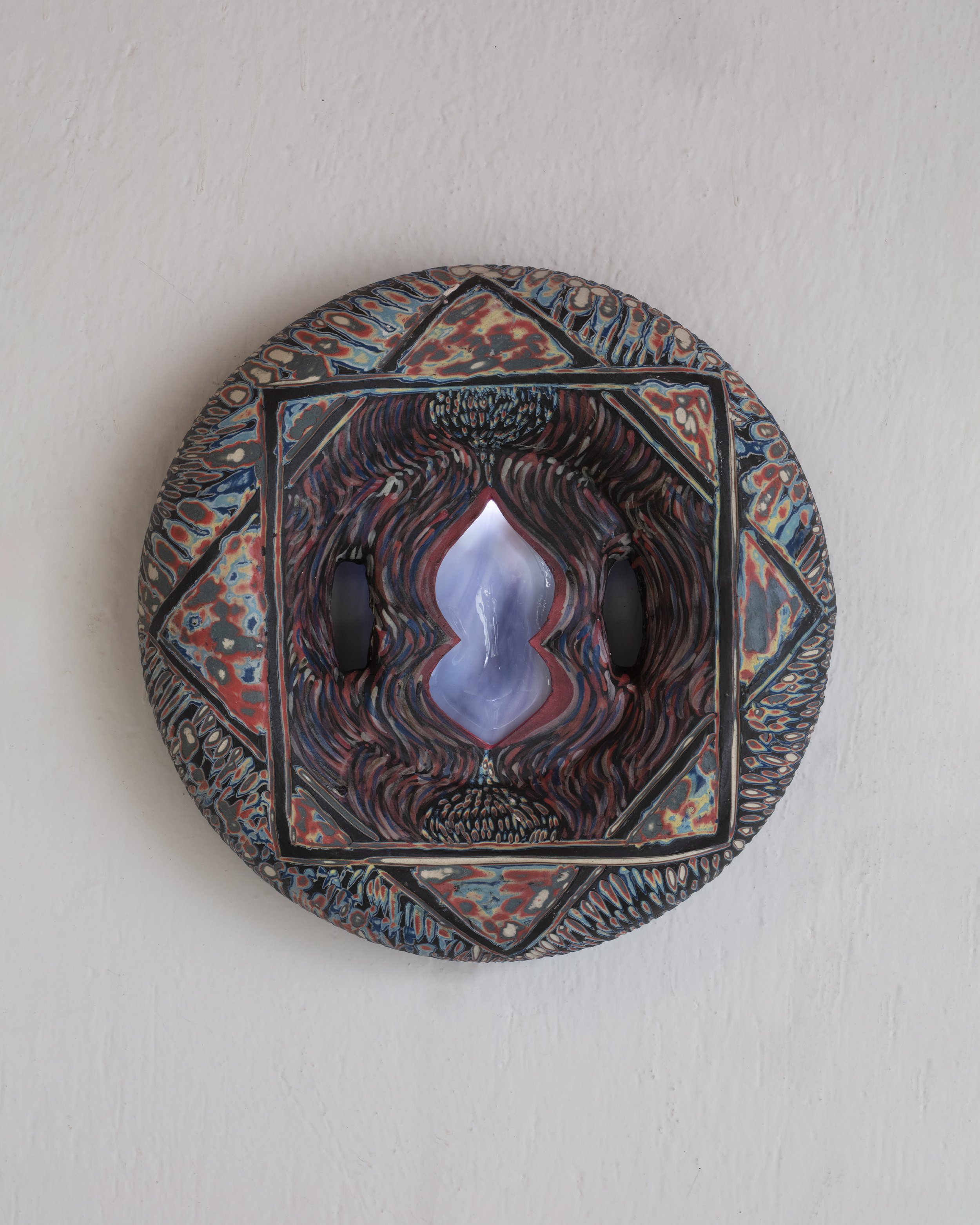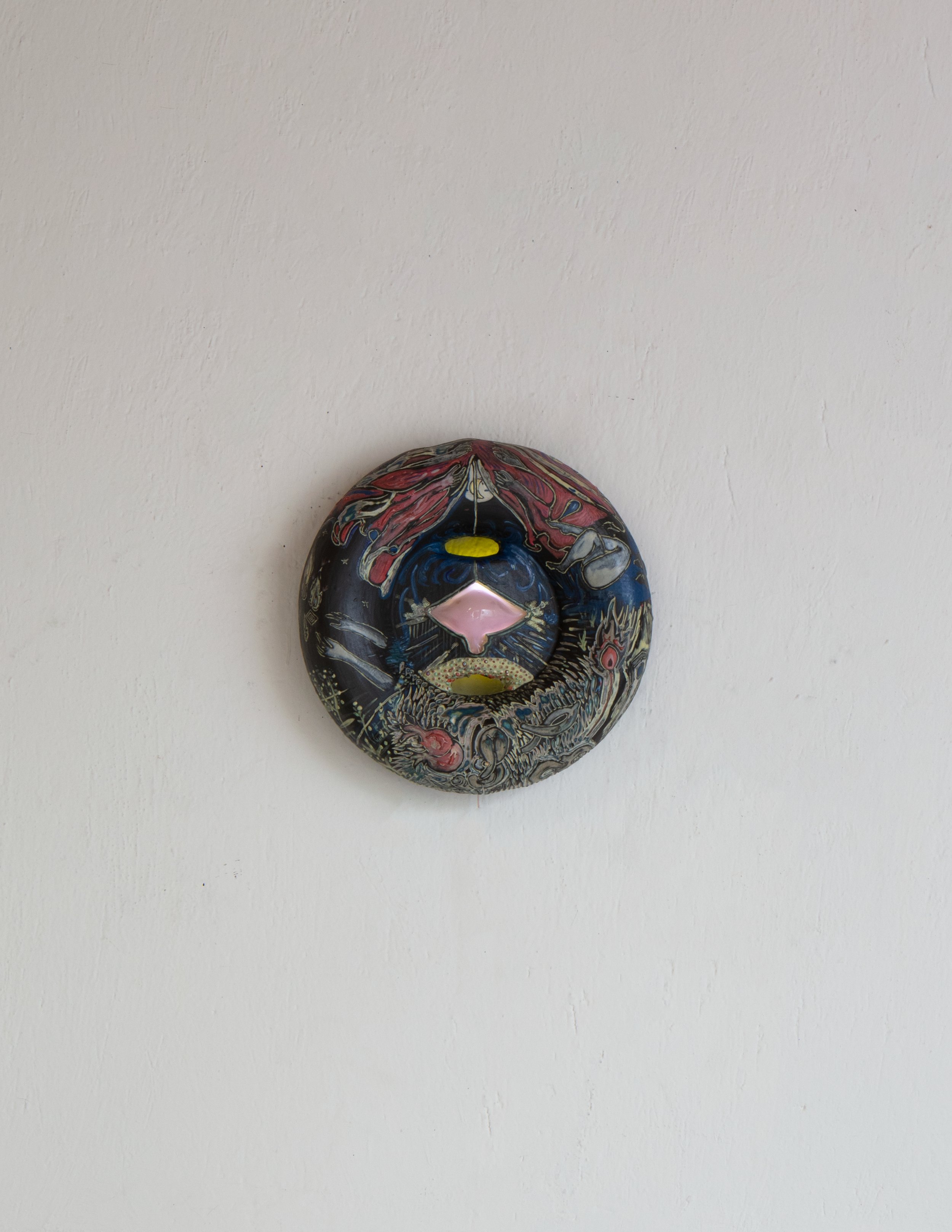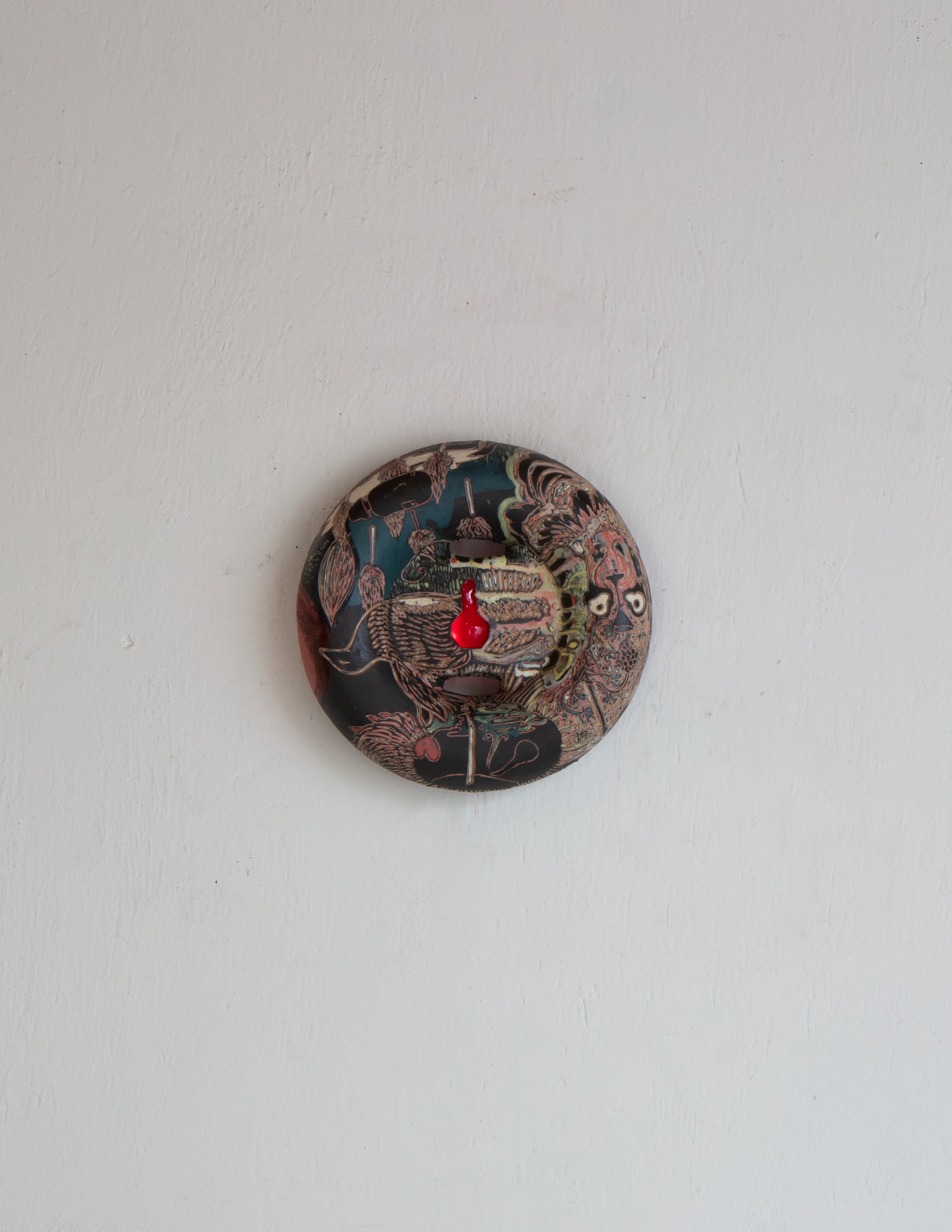Louis Reed
568 Grand St 10002
info@louisreed.nyc
Emilio Gómez Ruiz
Always at night but it was daytime
checklist Installation views
September 17 – November 17 2023
To think about ceramics as grounds for talking about painting, most people need to travel 5.9 miles uptown from Louis Reed to the Metropolitan Museum of Art. There, ancient urns and vessels are read like canvases of later vintage, giving us insight into the sport, sexuality, war, politics, and spirituality of their makers.
Curiously most contemporary ceramic output has lost the capacity to transmit meaning and is placed - or places itself - in utilitarian or decorative discourses.
Emilio Gomez Ruiz’s 8 paintings in ceramic, glass, and glaze build upon ancient traditions of using clay surfaces to pose metaphysical questions.
At the center of each work is a light which glows like a volcano’s magma chamber. By drawing our gaze immediately to the heart of each hemisphere, Ruiz signals that point as the beginning of each piece. This mirrors scientific and spiritual maps in which our own world was born of volatility and catastrophe, (e.g. the Big Bang and the Aztec legend of Five Suns), eventually giving way to subjectivity and symbolism as spacetime marches forward.
The designs and images that spill forth in a circular motion, follow the path of inscriptions on Aztec calendars and are created using a technique that borrows from the meso-American tradition of using burnished metal oxides to underglaze surfaces. What is rendered are some of the most essential parts of life: people, atoms, and animals, alongside geometric abstraction. Primal themes and incorporation of tradition are constantly built upon by Ruiz in a unique ritual of cosmic fortune-telling which results in fossils for the future. He explains,
“When the kiln surpasses 650 degrees Celsius, the material is devoid of water at a molecular level. The action of thousands of years is squeezed into a matter of hours.”
Although Ruiz’s technique can ostensibly take his works to the future and back, a linear notion of time is challenged by the ancient belief that our collective consciousness is embedded in the Earth, i.e. clay. Therefore, even after being accelerated in the kiln, the works cannot keep out two invaders, time and memory, simply due to what they are made of.
Always at night but it was daylight gives the feeling that the universe is out there shining back at us, but it is only at night, or maybe in the light of his sculptures, where we can see beyond our own sky and notions of past, present, and future.
— Frieda Toranzo Jaeger















